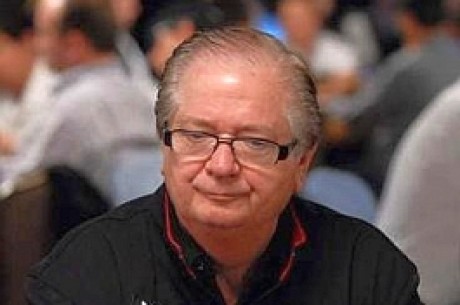From the Poker Vaults: The Boss Gamblers of Bexar County

For the most part the boss gamblers who thrived in Texas in the 1950s and 1960s were congenial to outsiders who wanted to sit in their games. As long as you didn’t get caught cheating or shoot anyone, you were usually welcomed with open arms. However, things were a little different in Bexar County, where Tom Moore, Slim Lambert, and Red Berry were the boss gamblers for over a decade. They were a bit more proprietary than their peers, and for good reason.
“This was one of the softest high-stakes no-limit games in the state due to the number of producers it drew,” explained Crandell Addington. “Because of this, Moore was protective of his game, and the only outside gamblers welcome to play were those of us who were his personal friends.”
Moore had a bigger say than his partners because he owned the house at 6701 West Avenue where the game took place. Located on eight acres in Castle Hills, an incorporated city entirely surrounded by the sprawl of San Antonio, his large and stately home was transformed into something of a casino on the weekends as hundreds of gamblers made their way there to play blackjack, craps, and roulette. Poker was the featured game the rest of the week. Typically, limit was played one night a week and no-limit five out of the other six.
Because Moore owned the property, he is most often associated with the game, but his time in charge was cut short in 1967 when he moved to Reno, Nevada and bought the Holiday Hotel and Casino. Two years later, he unwittingly changed the face of poker forever when he hosted an event called the Annual Gaming Fraternity Convention. He was only trying to drum up a little more business during a slow time of the year, but the gathering ended up being the precursor to the World Series of Poker.
Before Moore left Texas, he sold his share of the partnership to Slim Lambert, who continued to run the game with Berry’s assistance. Not much is known about Lambert other than the fact that he was made from the same mold as Charlie Bissell — if a poker player started winning in his game on a regular basis, Lambert often insisted that he get a piece of the action.
On the other hand, a little too much is known about the third member of the partnership, Red Berry. An Arkansas native, Berry settled in San Antonio after serving in the army. In 1934, he opened the Turf Club, an elegant casino with an attached beer hall and restaurant. After the club got raided one too many times, Berry sold it in 1957 and took his operation underground, joining forces with Lambert and Moore.
Berry’s time as one of the boss gamblers of San Antonio proved to be a steppingstone to a career in politics. In 1960, he was elected to the Texas House of Representatives. Six years later, he won a seat in the State Senate. But he didn’t let his day job interfere with his role as boss gambler. Not only did he continue to oversee the game at Moore’s house, he also hosted a high-stakes game in his office in the famed Gunner building in downtown San Antonio.
The game in Berry’s office attracted the toughest players around, including Johnny Moss… which was a bit of a problem. Producers rarely played in it. That certainly wasn’t the case with the game at Moore’s house on West Avenue. Producers, generally wealthy businessmen from the San Antonio’s high society, flocked to the game in droves. John Monfrey, the Falstaff beer distributor for South Texas, was one of the biggest fish. Austin Hemphill, a Ford dealer, was another. They were joined by various oilmen, bankers, ranchers, and restaurateurs, and of course the handful of professionals who the hosts allowed to play.
Crandell Addington was one of the lucky few. He first played in the game in 1963. He was only 25 and didn’t have much of a bankroll, but that really didn’t matter. The way he tells it winning in that game was almost guaranteed. “I could win $20,000 in one night and never get my chips in jeopardy. I might lose $1,000 or $2,000, but I could win $20,000 easily.”
While sitting in this game one night, Addington witnessed one of those amazing hands that gets talked about for years afterwards. They were playing $80/160 limit hold’em, and the flop came A-4-2. Doyle Brunson had three aces, Gilbert Hess of Dallas had three deuces, and the fish in the game, a local contractor, had three fours. The three players capped the betting on the flop, and a deuce fell on the turn. Brunson led out with a bet, but when he got raised and reraised he correctly (and amazingly) deduced that he was beat and mucked his cards. Hess was all set to win the sizeable pot when the case four fell on the river.
The only consolation for Hess was that if that hand had occurred on a night when they were playing no-limit the damage would have been much more severe. On some nights the pots got well into the six figures. Cars, houses, ranches, all were won and lost on a single turn of the cards. It was, by most accounts, the biggest game in Texas during that era, which by extension made it the biggest game in the entire country. It didn’t hold that distinction for very long, however. Moore’s move to Reno in 1967 crippled it, and Berry’s death in 1969 put the final nail in its coffin.








